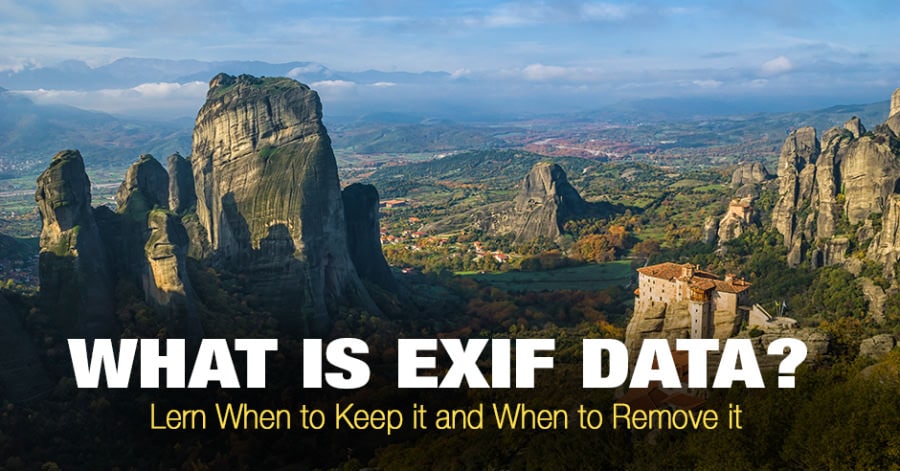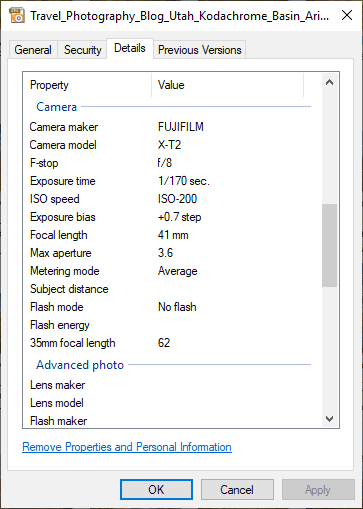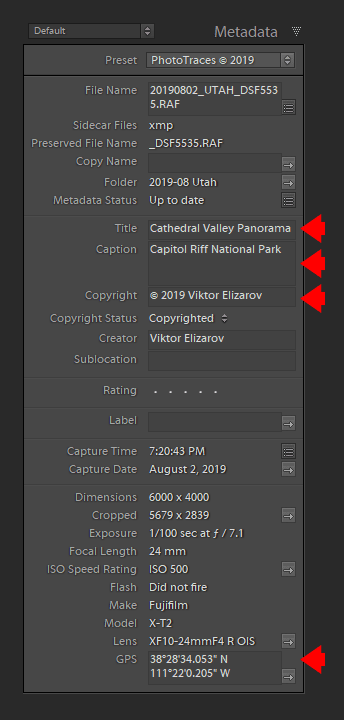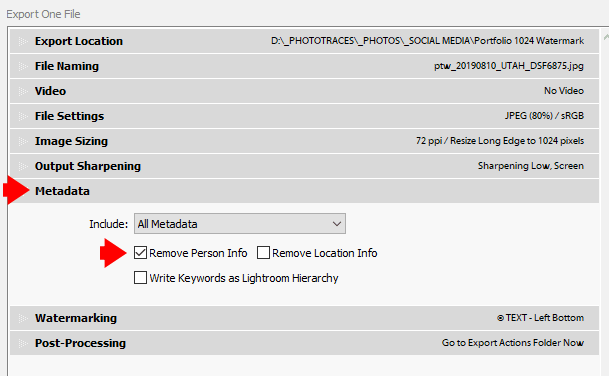We have all heard the term, but what is EXIF data? What should we be doing with this data, and can it be dangerous? In this article, we will look at what EXIF data is, how we can read and manipulate it, and discuss what we should be doing with it, and why some feel it could be dangerous.

What is EXIF Data
EXIF data, sometimes called metadata, is a collection of information that is stored by the camera at the moment you take a photo. This information includes many settings and other technical aspects that can be very useful. Some of the most common data are things such as date, time, GPS location, camera model, lens type, ISO, focal length, shutter speed, etc.
The word “EXIF” comes from the Exchangeable Image File Format standard.
This data is stored by the camera within the photo file and can be accessed and used by software to locate sort, and process photos. The photographer can also access EXIF data. This can be useful when determining when or where the photo was taken, and also what settings were used. Having all of this info captured by the camera means you can focus on taking more pictures instead of taking notes to reference later.

EXIF data is stored embedded into the physical file of the image, and therefore can only be accessed by specific software. The information is removed when a photo is converted to formats other than JPEG, such as PNG or GIF.
How can we read EXIF Data?
EXIF data can be accessed in many ways nowadays, which is an improvement over the past. There are dedicated EXIF applications that you can use to view, edit, and remove EXIF data from photo files.
Related: How to Keep the Horizon Straight When Shooting Landscape
The latest versions of Windows and Mac OS’s
display EXIF data in file browsers, which allows you to sort and filter images
based solely on the data.


If you are a Windows user, I recommend installing a free Raw Image Extension from Microsoft store to add native viewing support to proprietary RAW images.
All photo editing programs display EXIF data, and most have excellent interfaces to add, edit, and remove data as you would like. Being able to edit the data in this way allows you to remove information that you don’t want to share, such as location information and camera settings. It also allows you to add additional copyright information to your photos.
How can we modify EXIF data?
When it comes to modifying the EXIF data, there are several reasons and ways to do so. Most all photo editing programs, such as Lightroom, will allow you access to add additional info, and to change the existing information should you need to.
Related: Sunset Beach Photography Tips
If you are editing image using Lightroom, you can add a title and a description to the photo, which can help you later on, and your clients as well. You can add GPS coordinates of where you took the picture for future reference.

Copyright information such as the copyright status, creator name, and who holds the copyrights to the use of the photo, can all be added. If using Lightroom, you can add it to a single picture or a batch of selected images. You can also create “pre-sets,” which can be applied during import to add your copyright information automatically.
Related: What are the Different Types of Photography
You can also alter the EXIF data recorded by
the camera. For instance, if you have a photo that you took and the time is
incorrect because of time zone differences, you can manually correct the time.

Should we keep it or remove EXIF Data from our Photos?
A significant point of contingency for a lot
of photographers is whether or not you should remove EXIF data before posting
or publishing a photo. While there are pros and cons for both, a lot of the
time, it comes down to the individual image and what you are going to do with
it.
Pros for keeping EXIF Data
- Allows others to understand how
the image was created - Carries copyright information even
without a watermark - Shows the location of where the
picture was taken
If you are a photographer, you have most likely looked at other photographer’s work. You could be looking at different styles, composition, lighting, etc. Being able to look at the EXIF data of the image would tell you a lot about what the photographer was doing when they took that photo. You can then start to try different settings and learn to create the same effect or look, which can improve your photography skills.
While a lot of photographer marks their photos with visible watermarks that express the copyrights of the image, many feel this is overbearing or takes away from the pictures. If the EXIF data has the copyright information recorded, this should protect your work and keep unauthorized prints from being made.
A lot of people will look at a photo and want
to know where it was taken. If the EXIF data is present, this will show them.
Of course, this can also be a con depending on the subject and location of the
image.
Cons for keeping EXIF Data
- Reveals camera settings and equipment used
- Can expose your location if photos are taken at your home
- Increases file size, which can affect the website speed
If you have a particular style of photography or use specific equipment that you view as a trade secret, sharing the complete EXIF data would expose this. For this reason, a lot of photographers will strip all data or all but the copyright info.
Related: How to Use a Light Meter for Photography
Sometimes you want to keep the location of the
photo private. The reasons could be because you took it at your house, on
private property, or in an area that would be sensitive to increased traffic.
The larger a photo file is, the longer it
takes to load when browsing a website. To reduce the load time, images used on
web pages will often be stripped of the EXIF data to make the files smaller.
How to remove EXIF Data from our Photos
Most photo editing programs offer different levels of control over the EXIF Data. Lightroom gives us an extensive list of options for managing what information to keep and what to remove.
In Lightroom, you control the EXIF Data in the Export Module when you are ready to export the photo for publishing.
You can choose to include Copyright Info only, Copyright + Contact or preserve All Metadata.

Plus, you have the option to include or exclude the keywords assigned to the image in Lightroom.

Conclusion
In conclusion, EXIF data is information that
is stored in the photo file, that includes data about the image itself, the
camera and equipment used to create it, the settings and details of editing,
and copyright information.
We have full control over this data and
whether or not we include it in our final files or not. Doing so can reveal
information about us, our gear and settings used, and location the image was
taken.
The decision to include it or not depends on
what you are doing with the photo. If it is a photo of your child’s birthday
party in your backyard, you may want to strip the location information. If you
are posting a new art installation in town on social media, it is OK to leave
the data so that other photographers and like-minded readers can see more
information about the photo.

